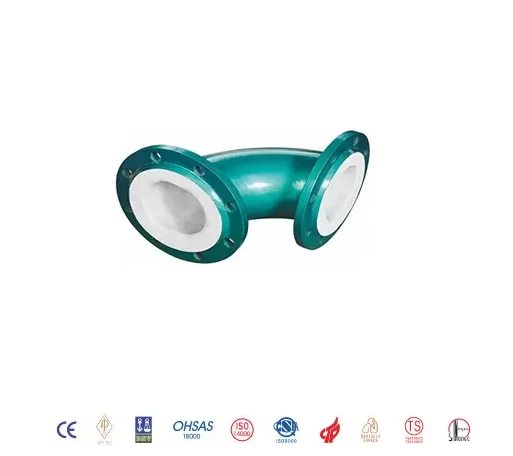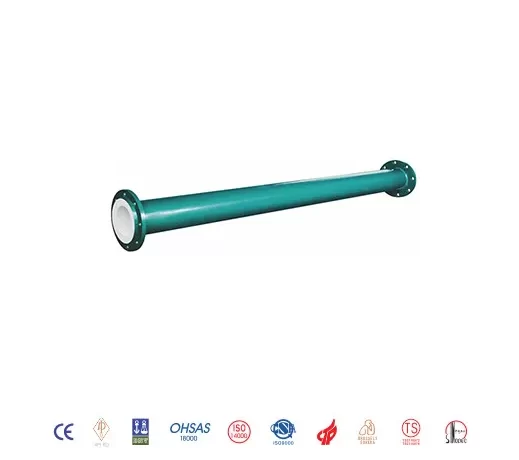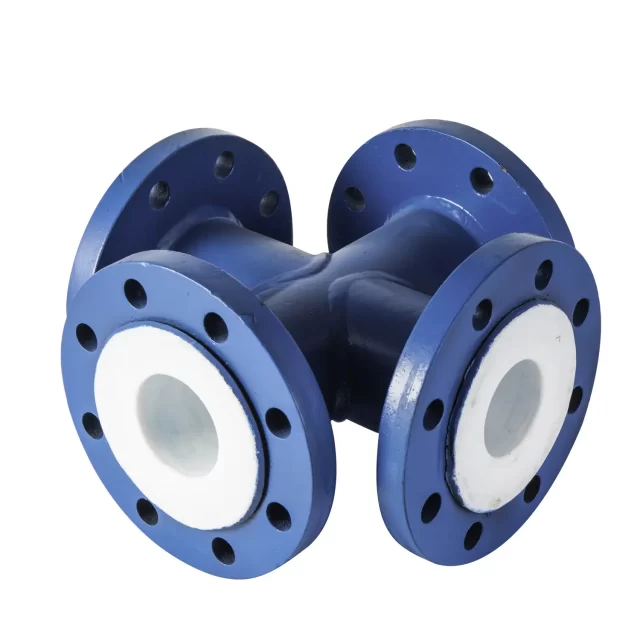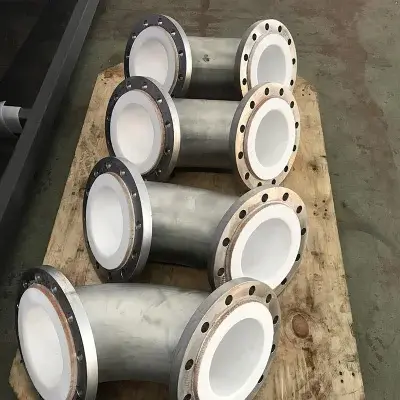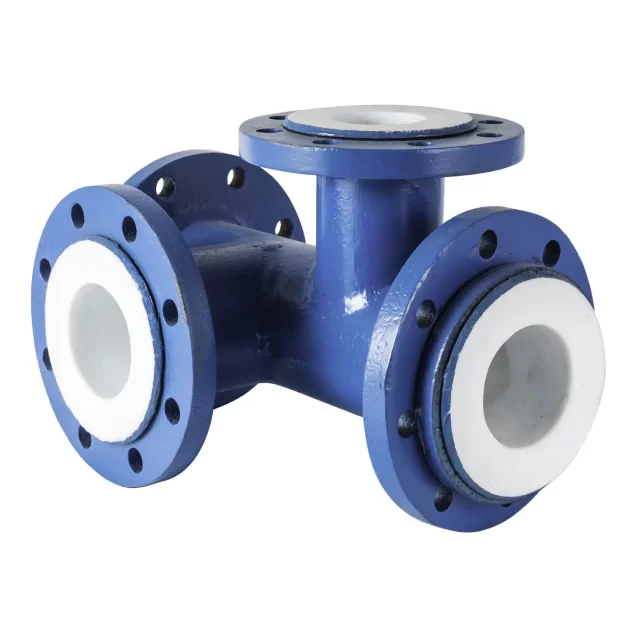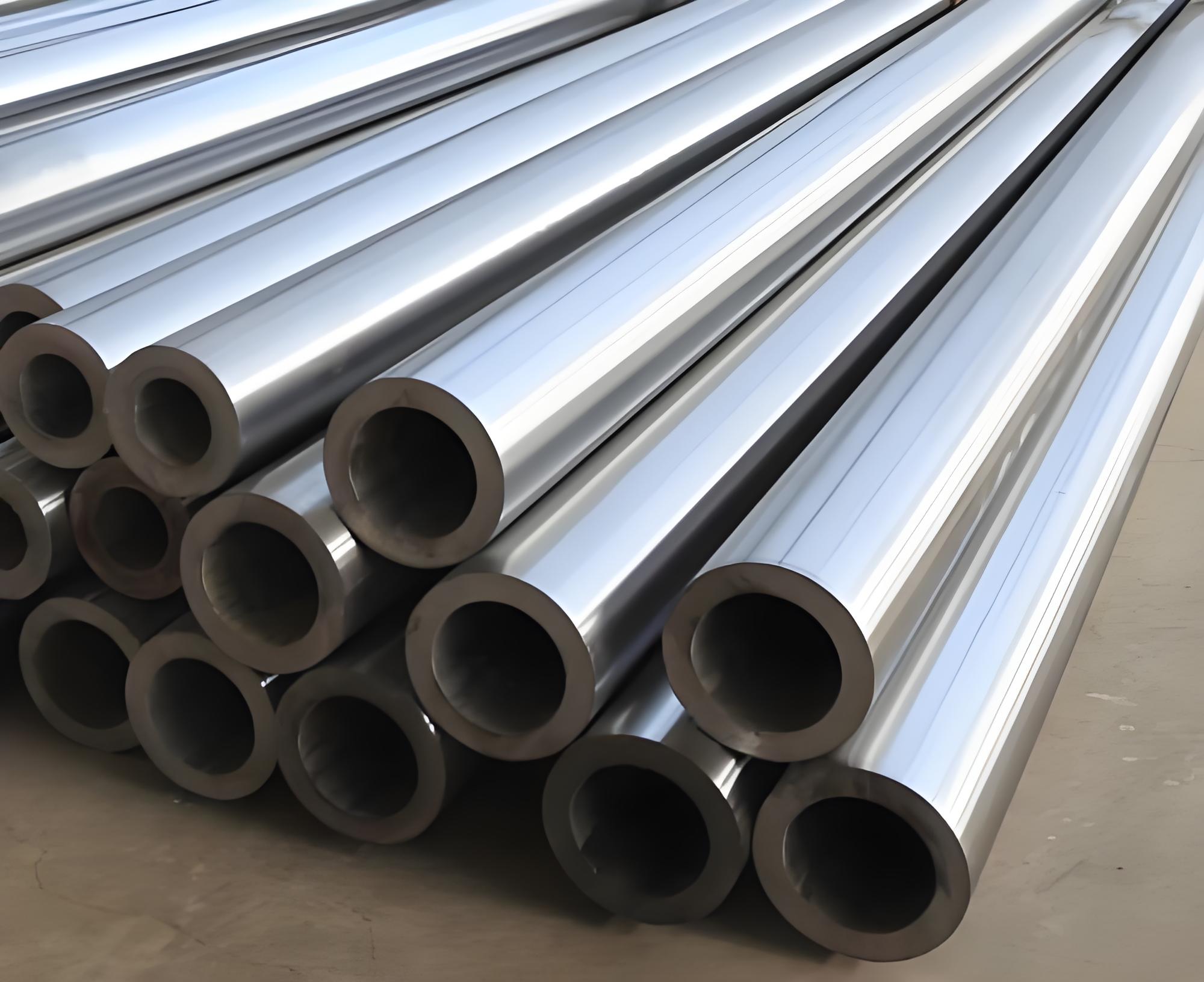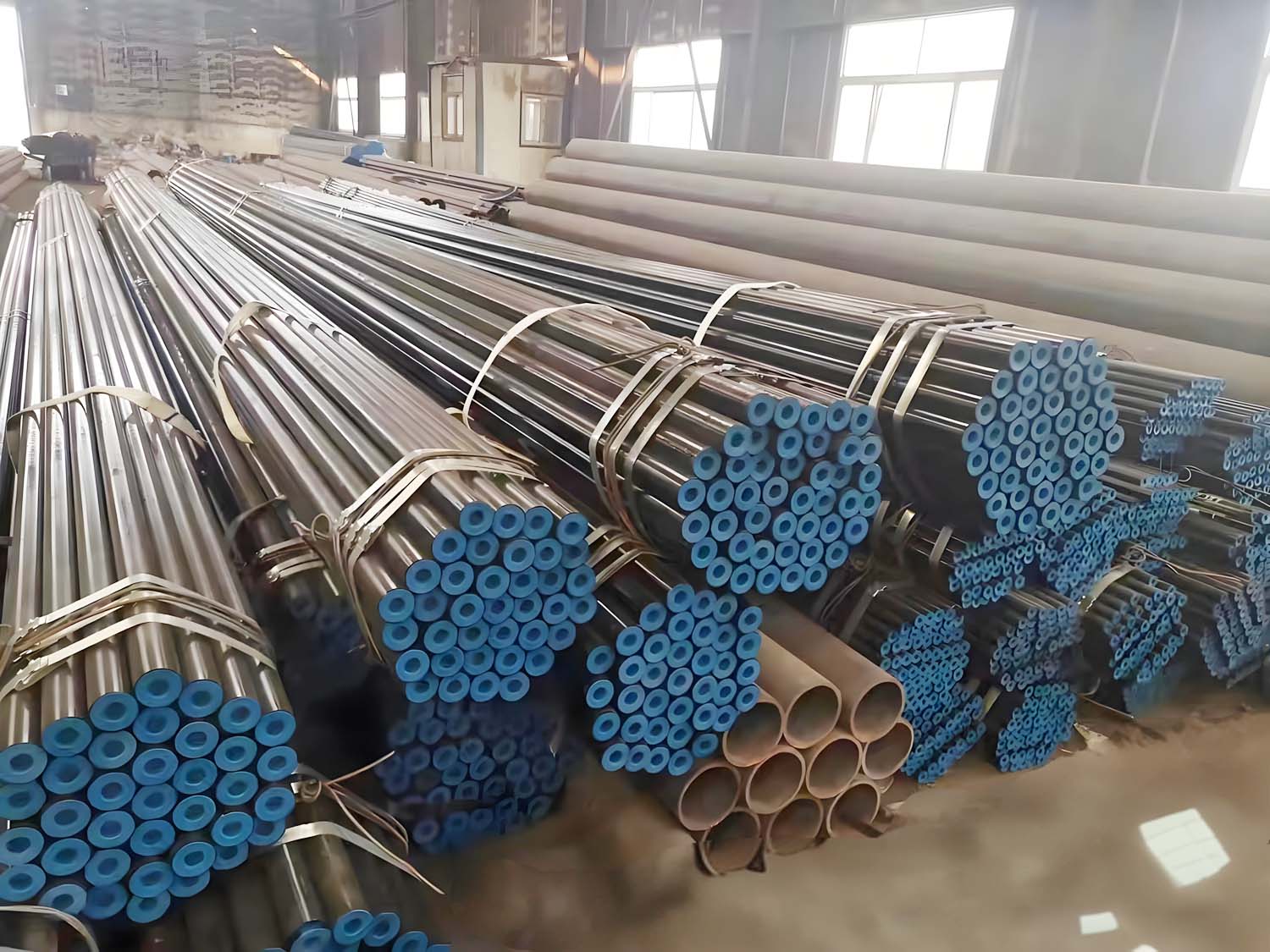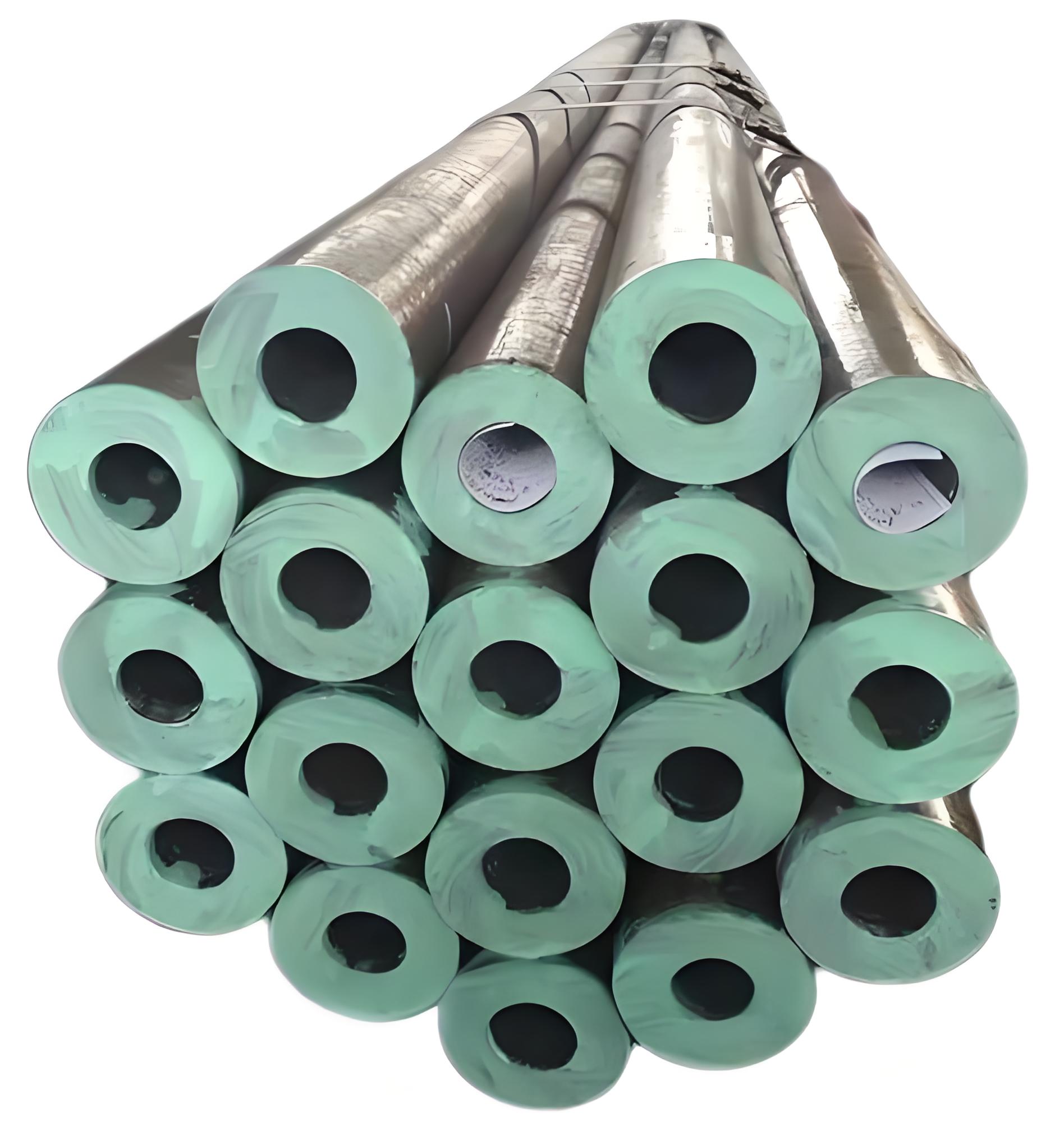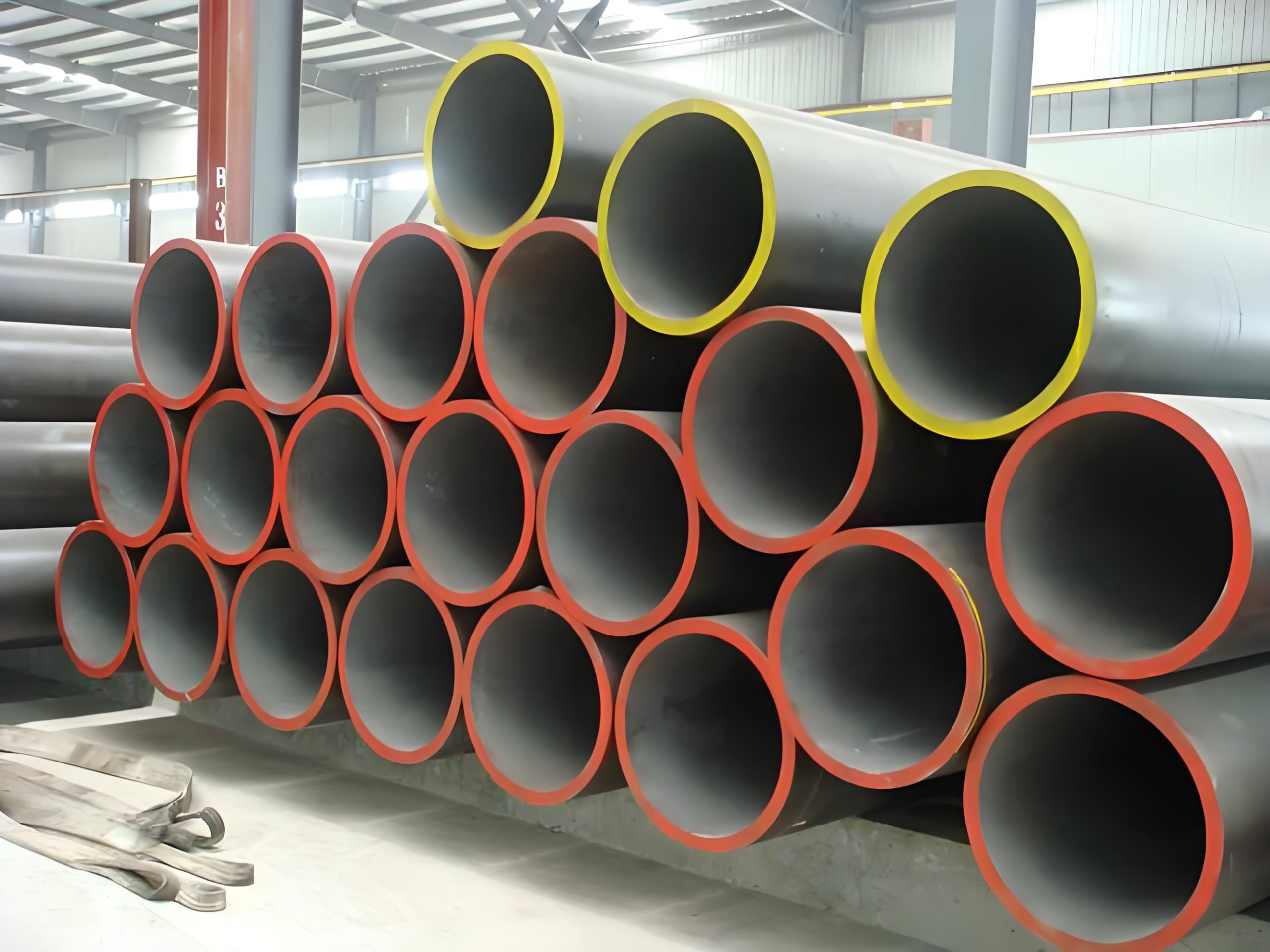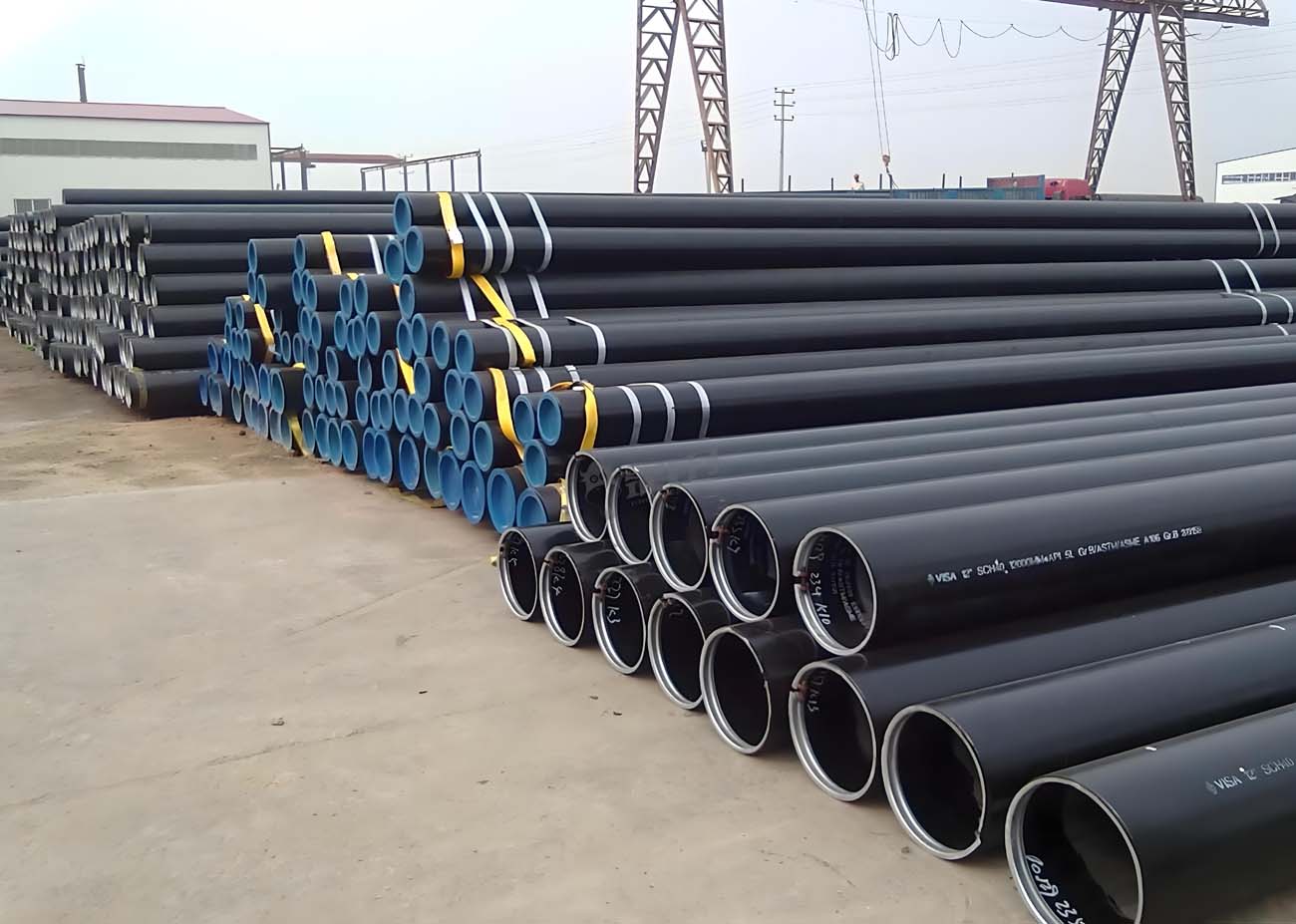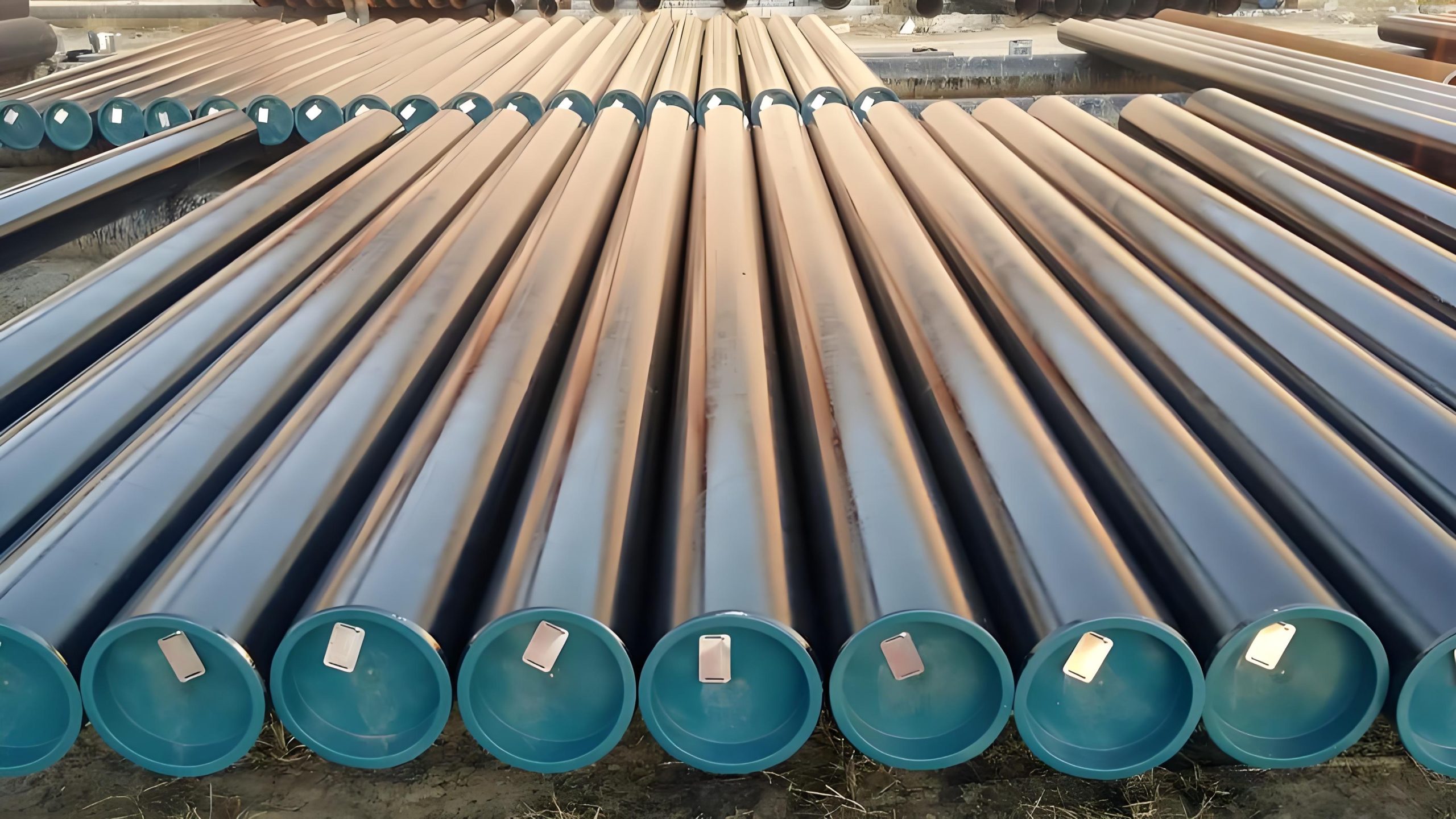الأنابيب والتركيبات المبطنة بـ PTFE
PTFE اصطف الأنابيب والتجهيزات: دليل شامل
مقدمة
بولي تترافلورو إيثيلين (بتف), المعروف باسم العلامة التجارية تفلون, هو بلاستيك عالي الأداء معروف على نطاق واسع بمقاومته الكيميائية الاستثنائية وخصائصه غير اللاصقة. عندما تستخدم لخط الأنابيب والتجهيزات, يوفر PTFE حلا قويا للصناعات التي تتعامل مع السوائل شديدة التآكل أو التفاعلية. تتعمق هذه المقالة في الخصائص, التطبيقات, فوائد, واعتبارات الأنابيب والتجهيزات المبطنة ب PTFE, توفير فهم شامل لدورها في العمليات الصناعية الحديثة.
خصائص PTFE
المقاومة الكيميائية
يشتهر PTFE بمقاومته الكيميائية التي لا مثيل لها. يمكنه تحمل المواد الكيميائية العدوانية, بما في ذلك الأحماض, قواعد, المذيبات, والمؤكسدات, مما يجعلها مناسبة للتعامل مع مجموعة واسعة من السوائل الصناعية.
الاستقرار الحراري
يعرض PTFE ثباتا حراريا ممتازا, الحفاظ على خصائصه عبر نطاق واسع من درجات الحرارة. يمكنه تحمل درجات الحرارة من -200 درجة مئوية إلى + 260 درجة مئوية (-328درجة فهرنهايت إلى + 500 درجة فهرنهايت), وهو أمر بالغ الأهمية للتطبيقات التي تنطوي على درجات حرارة قصوى.
احتكاك منخفض وخصائص غير لاصقة
يقلل معامل الاحتكاك المنخفض والطبيعة غير اللاصقة ل PTFE من مخاطر تراكم المواد وانسدادها داخل الأنابيب والتجهيزات. هذا يضمن التدفق السلس للسوائل ويقلل من متطلبات الصيانة.
العزل الكهربائي
PTFE هو عازل كهربائي ممتاز, والتي يمكن أن تكون مفيدة في التطبيقات التي يجب فيها تقليل الموصلية الكهربائية أو التحكم فيها.
القوة الميكانيكية
في حين أن PTFE نفسها ناعمة ومرنة نسبيا, يمكن تقويتها بمواد أخرى لتحسين قوتها الميكانيكية. عند استخدامها كبطانة, فهو يجمع بين مقاومته الكيميائية والسلامة الهيكلية لمواد الأنابيب الخارجية, مثل الصلب.
تصنيع الأنابيب والتجهيزات المبطنة PTFE
عملية التبطين
تتضمن عملية تبطين الأنابيب والتجهيزات باستخدام PTFE عادة الخطوات التالية:
- تحضير: يتم تنظيف السطح الداخلي للأنبوب أو التركيب وإعداده لضمان الالتصاق مناسب لبطانة PTFE.
- تركيب بطانة: يمكن تثبيت بطانات PTFE باستخدام مجموعة متنوعة من الطرق, مشتمل:
- النتوء: يتم بثق PTFE في شكل أنبوبي وإدخاله في الأنبوب.
- لصق النتوء: يتم بثق معجون PTFE ثم تلبيده داخل الأنبوب.
- صب متساوي الاستاتيكية: يتم تشكيل مسحوق PTFE تحت ضغط عال وملبد لتشكيل بطانة غير ملحومة.
- تلبيد: يتم تسخين الأنبوب المبطن لتلبيد PTFE, إنشاء زي موحد, بطانة غير مسامية.
- مراقبة الجودة: يخضع المنتج النهائي لاختبارات صارمة لضمان سلامة وتوحيد بطانة PTFE.
أنواع التركيبات المبطنة PTFE
تأتي التركيبات المبطنة PTFE في أنواع مختلفة لتلبية تكوينات الأنابيب المختلفة:
- المرفقين: لتغيير اتجاه تشغيل الأنابيب.
- المحملات: للتفرع من خط الأنابيب الرئيسي.
- مخفضات: لتغيير قطر الأنبوب.
- الشفاه: لتوصيل الأنابيب وضمان ختم مانع للتسرب.
- الصمامات: للتحكم في تدفق السوائل داخل النظام.
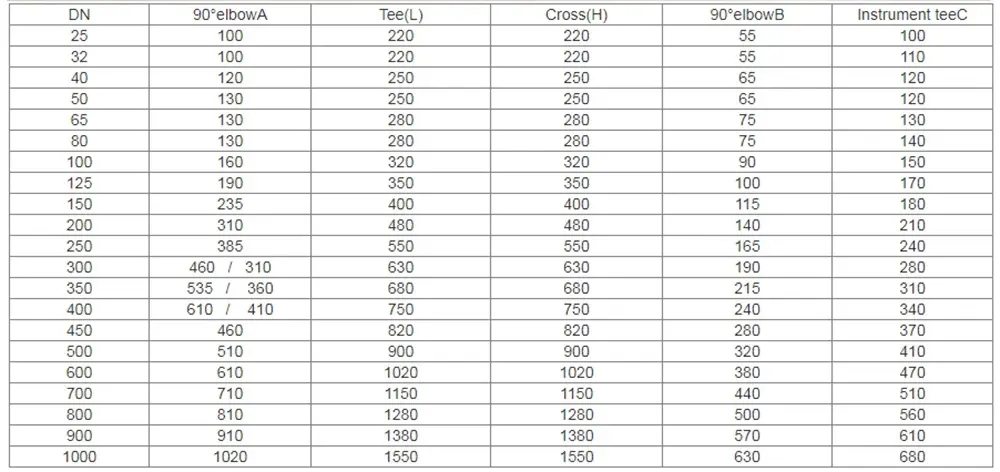
الشركة المصنعة للأنابيب المبطنة PTFE
PTFE اصطف الأنابيب بواسطة الكبش النتوء
يمكن أن تختلف الأنابيب المبطنة PTFE المنتجة من خلال بثق الكبش في الطول, مع أقصر حوالي 100 مم اعتمادا على التجويف الاسمي, وأطول وصول يصل إلى 6 متر لأقطار تصل إلى DN150. للأقطار التي تزيد عن DN150, الحد الأقصى للطول هو عادة 3 متر. يتم تصنيع هذه الأنابيب بشكل عام من الفولاذ الكربوني, على الرغم من أن الفولاذ المقاوم للصدأ يستخدم أيضا بشكل شائع في المناطق الخطرة حيث يكون التآكل الخارجي مصدر قلق.
المواصفات الفنية
- معيار التصميم والتصنيع: ASTM F1545, زئبق / ت 21562
- شفة قياسية: أسم B16.5, زئبق / ت 20592, من, هو
- تقتيش & اختبار: ASTM F1545
مواصفات المنتج
- مادة الجسم: أ 105, SS304, SS316, SS316L
- مواد البطانة: بتف, بفا, بو
- القطر الاسمي: 1″
24″ (DN25DN600) - نطاق الضغط: فصل 150, PN10, PN16
منتوج وصف
تقوم Abtersteel بتصنيع الأنابيب والتجهيزات المبطنة باستخدام تقنيات صب مختلفة, بما في ذلك صب الضغط, صب متساوي الاستاتيكية, حقن صب, نقل صب, القولبة الساخنة, ذاكرة الوصول العشوائي / لصق البثق, و 3D صب الدورانية. الخصائص الرئيسية هي كما يلي:
- درجة حرارة التشغيل: تتراوح درجة حرارة العمل من -29 درجة مئوية إلى 200 درجة مئوية. بصرف النظر عن المعادن القلوية المنصهرة, عنصر الفلور, والهيدروكربونات العطرية, يمكن استخدام هذه المنتجات المبطنة مع أي وسيط كيميائي.
- مقاومة الفراغ: مناسبة لظروف الفراغ ضمن نطاق درجة حرارة -29 درجة مئوية إلى 150 درجة مئوية. هذا مهم بشكل خاص في الإنتاج الكيميائي حيث يمكن أن تحدث ظروف الفراغ بسبب التبريد, الانبعاثات الطولية, أو التدفق العكسي المتوسط.
- مقاومة الضغط العالي: يمكن أن تتحمل ضغوط العمل التي تصل إلى 3.0 MPa ضمن نطاق درجة الحرارة المحددة.
- مقاومة الاختراق: يستخدم PTFE عالي الجودة لضمان كثافة عالية وسمك كاف, توفير خصائص ممتازة مضادة للتناضح.
- عملية تبطين متقدمة: تتضمن عملية بطانة PTFE تمددا ساخنا متزامنا أو انكماشا باردا لمكونات الصلب وبلاستيك الفلور, تعزيز سلامة البطانة.
- المقاسات القياسية: تنتج Abtersteel وفقا لمعايير مثل HG, غيغابايت, من, أنسي, و JIS, ضمان قابلية عالية للتبادل وسهولة التركيب.
- الخصائص الفيزيائية:
- الثقل النوعي: 2.14-2.19 جم / سم مكعب (وفقا لمعيار اختبار ASTM D792)
- قوة الشد: الحد الأدنى من 20.7 MPa (وفقا لمعيار اختبار ASTM D638)
- استطالة: الحد الأدنى من 250% (وفقا لمعيار اختبار ASTM D638)
- معيار التصنيع: ASTM D4895. يمكن أن تعمل هذه الأنابيب تحت ظروف فراغ تصل إلى 150 درجة مئوية.
توفر الأنابيب والتجهيزات المبطنة ب PTFE من Abtersteel حلولا قوية للتعامل مع المواد الكيميائية العدوانية والبيئات التشغيلية الصعبة, ضمان المتانة والموثوقية في التطبيقات الصناعية المتنوعة.
تطبيقات الأنابيب والتجهيزات المبطنة PTFE
المعالجة الكيميائية
في الصناعة الكيميائية, الأنابيب والتجهيزات المبطنة PTFE ضرورية للتعامل مع المواد المسببة للتآكل مثل الأحماض, القلويات, والمذيبات. أنها تضمن النقل الآمن واحتواء هذه المواد الكيميائية العدوانية, منع التسربات والتلوث.
صناعة الأدوية
تتطلب صناعة الأدوية مواد تقاوم التلوث وتحافظ على النقاء. PTFE lined pipes and fittings are used to transport sensitive and reactive compounds, ensuring that product integrity is maintained.
Food and Beverage Industry
PTFE’s non-reactive nature makes it suitable for the food and beverage industry, where it is used in processes involving acidic or alkaline substances, as well as high-temperature applications such as steam cleaning.
النفط والغاز
The oil and gas industry uses PTFE lined pipes and fittings for transporting corrosive fluids and gases. These components are critical in offshore drilling, refining, and chemical injection processes.
معالجة المياه
In water treatment facilities, PTFE lined pipes and fittings are employed to handle aggressive chemicals used in water purification and disinfection processes, including chlorine and other oxidizing agents.
Benefits of PTFE Lined Pipes and Fittings
تعزيز المقاومة للتآكل
PTFE provides superior resistance to a wide variety of corrosive substances, extending the lifespan of pipes and fittings and reducing maintenance costs.
Improved Safety
عن طريق منع التسربات والتلوث, PTFE lined pipes and fittings improve safety in industrial environments, protecting workers and the environment from hazardous substances.
Cost-Effectiveness
Although the initial cost of PTFE lined pipes and fittings may be higher than unlined alternatives, their durability and reduced maintenance needs result in lower total cost of ownership over time.
براعة
PTFE lined pipes and fittings are versatile and can be used in a broad range of industries and applications, from chemical processing to food production.
انخفاض الصيانة
The non-stick properties of PTFE minimize the accumulation of residues and scale within the pipes and fittings. This reduces the frequency of cleaning and maintenance, leading to lower operational costs and increased uptime for industrial processes.
Thermal and Chemical Stability
PTFE lined pipes and fittings maintain their integrity across a wide range of temperatures and chemical exposures. This stability ensures consistent performance and reliability, even in harsh operating conditions.
Considerations and Challenges
يكلف
While PTFE lined pipes and fittings offer long-term benefits, the initial cost can be significantly higher compared to unlined alternatives. It’s important to weigh the upfront investment against the potential savings in maintenance and replacement costs over the lifecycle of the system.
تثبيت
Proper installation is crucial to ensure the effectiveness of PTFE linings. This often requires skilled labor and specialized equipment, which can add to the overall project cost. Ensuring that joints and connections are properly sealed is also essential to prevent leaks.
الإجهاد الميكانيكي
بتف, while chemically resistant, is relatively soft and can be susceptible to mechanical damage such as cuts, الجروح, and deformation under high pressure. Reinforcement and careful handling during installation and operation are necessary to maintain the integrity of the lining.
Compatibility
Not all fluids and operating conditions are compatible with PTFE. على سبيل المثال, PTFE can degrade when exposed to certain high-energy radiation environments or at temperatures exceeding its thermal limits. It’s essential to ensure that PTFE is suitable for the specific application in which it will be used.
Future Trends and Innovations
Advanced Composites
Research into advanced composite materials that combine PTFE with other polymers or reinforcements is ongoing. These composites aim to enhance the mechanical properties of PTFE while retaining its excellent chemical resistance, potentially expanding its range of applications.
Enhanced Installation Techniques
Innovations in installation methods, such as improved bonding techniques and automated installation processes, are being developed to reduce costs and improve the reliability of PTFE lined pipes and fittings.
Smart Monitoring
Integrating smart sensors and IoT technology into PTFE lined systems can provide real-time monitoring of conditions such as temperature, ضغط, ومعدلات التدفق. This data can help in predictive maintenance and early detection of potential issues, further enhancing the reliability and efficiency of industrial processes.
الاستدامة
As environmental concerns grow, there is increasing interest in developing more sustainable production methods for PTFE and exploring recycling options for PTFE-lined components at the end of their service life.
خاتمة
PTFE lined pipes and fittings play a critical role in modern industrial applications, offering unmatched chemical resistance, thermal stability, والمتانة. Their benefits in reducing maintenance, enhancing safety, and ensuring reliable performance make them a valuable investment in sectors ranging from chemical processing to pharmaceuticals and beyond.
While the initial cost and installation challenges can be considerable, the long-term advantages often justify the investment. مع تقدم التكنولوجيا, the development of new materials and installation techniques will likely further improve the performance and cost-effectiveness of PTFE lined systems.
By understanding the properties, التطبيقات, and considerations associated with PTFE lined pipes and fittings, industries can make informed decisions to enhance the efficiency, أمان, and sustainability of their operations.
مراجع
- DuPont. (2021). Teflon™ PTFE: Properties Handbook.
- American Society of Mechanical Engineers (ASME). (2018). Standards for Piping Systems.
- International Journal of Polymer Science. (2020). Advances in PTFE Lining Technology.
- Chemical Engineering Journal. (2019). Application of PTFE Lined Pipes in Corrosive Environments.
- Society of Plastics Engineers (SPE). (2022). Innovations in Fluoropolymer Technologies.


